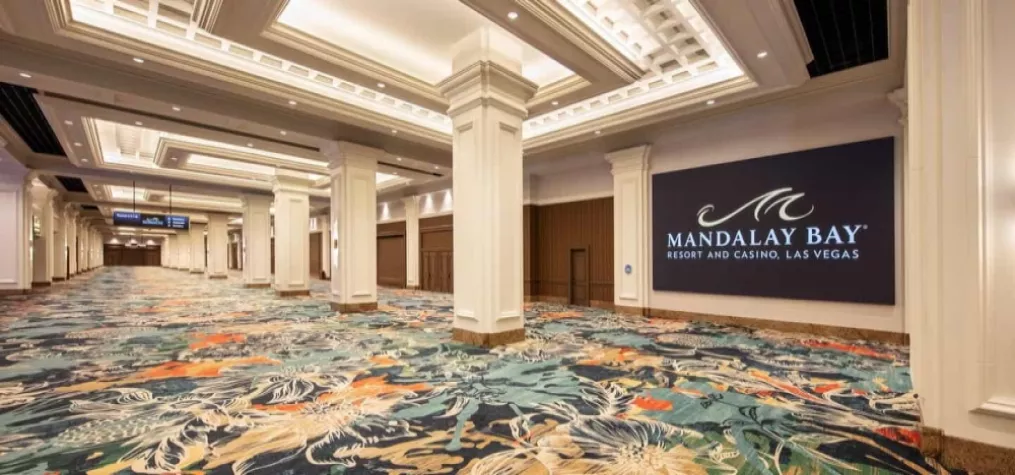Long, long ago (2006) in an industry far, far away, Clive Humby, a British mathematician and data science entrepreneur, stated “Data is the new oil. It’s valuable, but if unrefined, it cannot really be used. It has to be changed into gas, plastic, chemicals, etc., to create a valuable entity that drives profitable activity; so data must be broken down, analyzed for it to have value.”
In today’s event-tech-centric world, it’s relatively easy to generate new data, but in my opinion, much harder to refine it into profitable assets that fuel your business. This is not dissimilar to oil itself. But because it has so much intrinsic potential, oil companies invest a lot of money in protecting their raw crude. They implement all kinds of physical protections that range from perimeter fences, surveillance cameras, alarm systems, security staff and electronic monitoring equipment. I’m sure the list goes on and on.
These investments make sense when you consider the alternative. What could happen to a large storage of oil? Bad actors could steal it, I suppose, although that would seem to be a difficult task. More likely, bad actors could set it on fire, which would certainly create quite the scene and would effectively destroy the entire store. Additionally, these bad folks could alter something in the oil-management machinery that causes the oil to be spilled everywhere, like dumped into the sea. We’ve all seen what happens to a company’s reputation as well as bottom line when they end up leaking lots of oil into the environment. When I say Valdez, I bet you immediately know the oil company I’m referring to, right?
Why am I still talking about oil? Good question, but there is a method to my madness. As it turns out, this oily metaphor for data fits quite nicely as we consider the risks posed by cybersecurity incidents. Associations are sitting on a fair amount of data that certainly has value. In many cases, they have a complete Who’s Who listing for an entire industry. They have contact records, title and job role, historical engagement information, travel records and even credit card information. Have you ever heard of spear phishing or CEO fraud? I guarantee you every cybercriminal has.
CEO fraud is a scam in which cybercriminals spoof company email accounts and impersonate executives to fool an employee in accounting or HR into executing unauthorized wire transfers or sending out confidential tax information. According to FBI statistics, CEO fraud is now a $26 billion scam annually. It appears crime does pay in this instance.
Spear phishing is a social engineering method that targets specific individuals or groups within an organization, and it is a potent variant of standard phishing. Spear phishing emails are used by almost two-thirds (65%) of all known groups carrying out targeted cyber attacks. So, believe me, cybercriminals want to know who you are and what role you play in your organization. This is exactly the kind of information captured and stored by associations.
If security concerns alone were not enough, and they should be, our world is also increasing data management complexity by introducing ever more stringent privacy laws, some of which carry hefty fines. More states are following California with their own data privacy laws, and there are hints of a federal law coming in the near future.
The cherry on top of this pile of risk is data ownership. Who really owns the data you are holding? Most associations would be quick to state that they are the owners, but that picture has grown more complex as well. In actuality, a lot of the member data associations house is primarily owned by the individual. Well, if that’s the case, did you acquire the appropriate consent to use it like you are? Hmm. Let’s not forget about all of those data processors that you’re likely engaged with. Registration companies, association management systems, exhibitor systems, speaker manager systems, virtual event providers—this list goes on and on. Are you absolutely sure you’ve scoured every line of those 20-page contracts with these vendors in search of data ownership clauses? They love to use words such as “aggregate” and “metadata.” Are you sure you know exactly what that is in relation to your valuable oil asset?
Okay, enough of the problem statement. What is an association executive supposed to do about all this risk? For a majority of associations, having a full-time cyber security expert on staff is simply not realistic. Is it also unwise to blindly trust that your managed service provider (the team providing support of your staff’s computers) is also an expert security service, is up to date on the latest security best practices and is thinking about protecting your assets as if it were their own? The biggest problem first and foremost is simply this: too many questions and not enough knowledge.
Whether you’ve realized it or not, the world has evolved to require that every organization undergo an annual security assessment. I’m not referring to an all-out ISO 27001 (or fill in the blank for any number of other security frameworks) audit aimed at trying to award your organization a certificate of compliance to a regulation framework. These can be very expensive and rightly so. I’m referring to an assessment that covers a broad swath of areas and topics but doesn’t go as far as an audit. This keeps costs at a very reasonable level while still producing a report that turns on all the lights in the kitchen to uncover those darn security gap roaches.
To quote Himmilicious, “Do question, even the basics! You will be a fool for once. If you don’t, you will be for a lifetime.” Continually questioning to discover your weakest vulnerabilities is the only way to improve your security and protect your organization’s good name. Striking the ostrich pose with your head in the sand is simply not going to cut it because the criminals are at the gates today.
Don’t miss any event-related news: Sign up for our weekly e-newsletter HERE and engage with us on Twitter, Facebook, LinkedIn and Instagram!



Add new comment